Learn how to make einkorn sourdough bread with this simple, no-knead recipe.
Only four ingredients - all-purpose einkorn flour, salt, water and a sourdough starter are all you need for healthy, naturally-leavened bread.
With this recipe you can mix the dough and bake the bread on the same day!
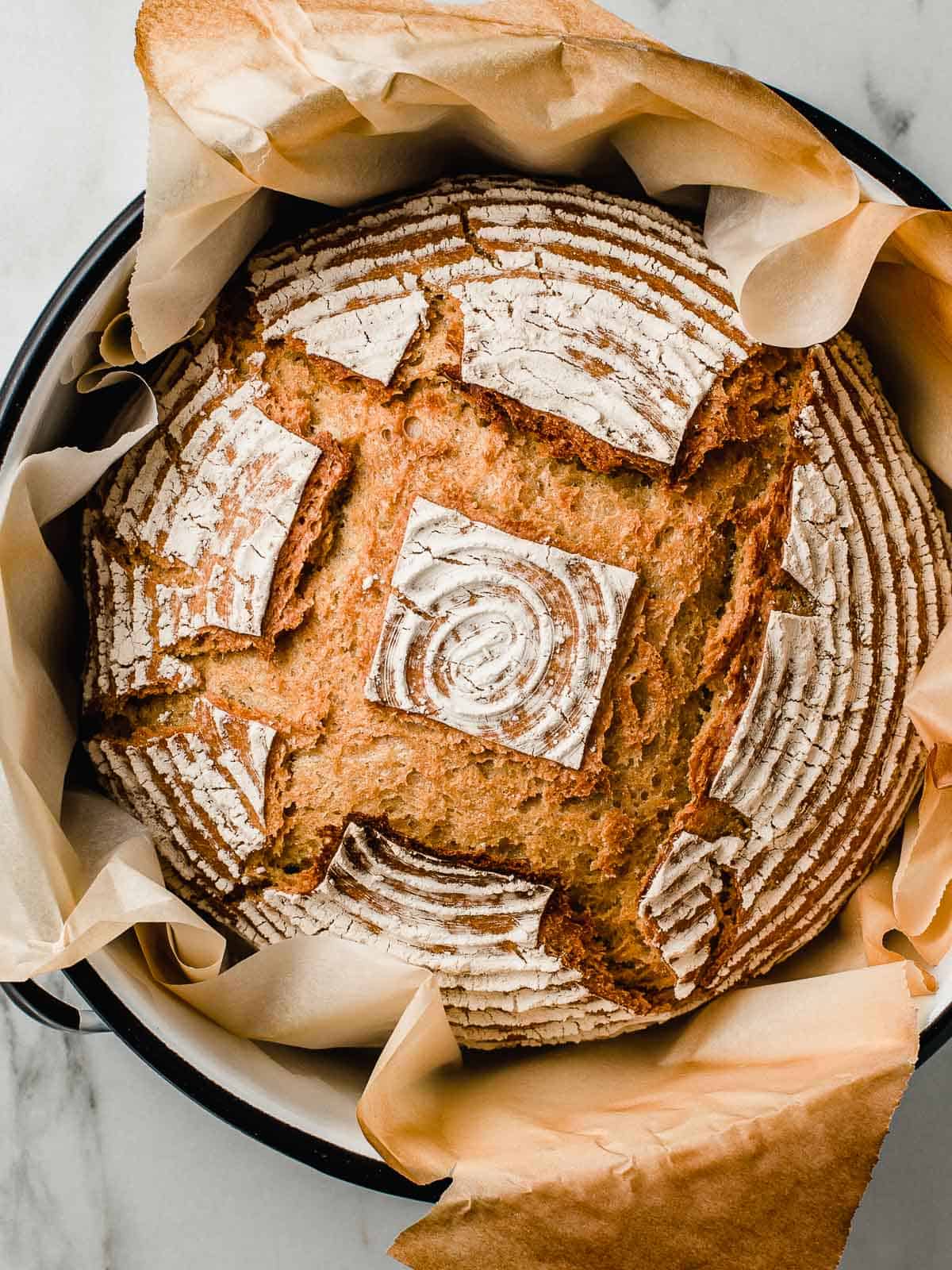
If you've never baked with einkorn flour, you are in for a real treat. This fail-proof recipe for einkorn sourdough bread will have you jumping for joy in your kitchen!
Follow the steps in this recipe and you'll get a light loaf with plenty of oven-spring.
It produces a nice, even crumb that is perfect for making sandwiches, french toast or dipping in your favorite soup!
Einkorn wheat has become our favorite way to enjoy sourdough!
Jump to:
What is einkorn?
Einkorn is the oldest form of wheat and is often referred to as an ancient grain. It is the only wheat that has never been hybridized.
Einkorn is organically grown and free from glyphosate and bleach.
Because it lacks the y-gliadins gluten protein group, which are present in all other types of wheat, einkorn flour is easier to digest then modern wheat varieties.
Einkorn also beats out modern wheat by containing more nutrients such as carotenoids, B vitamins, and essential and trace minerals.
The result is a bread that is rich in flavor, color and nutrition.
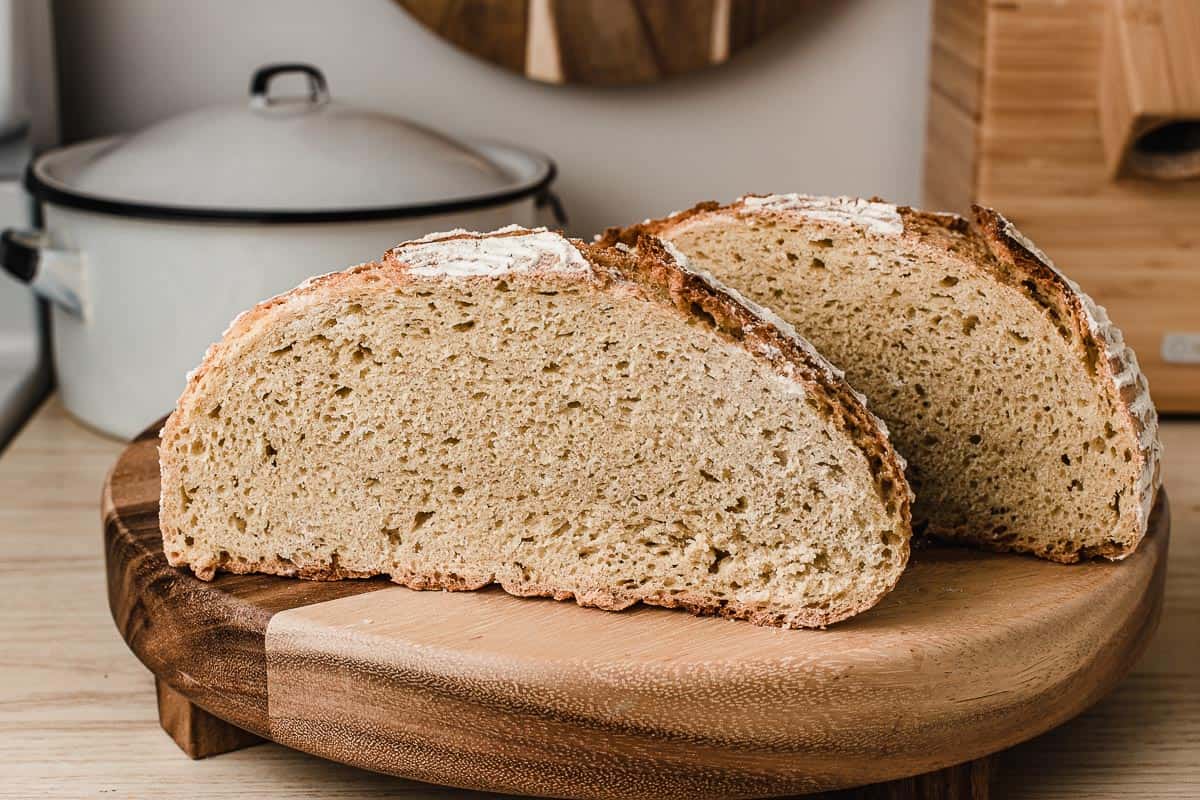
What you'll need
Just like our other sourdough bread recipes, the ingredients are simple.
- sourdough starter
- all-purpose einkorn flour (affiliate link)
- salt
- water
Equipment needed
(Amazon affiliate links) - Check out my favorite kitchen essentials.
Step by step instructions
When einkorn flour is mixed with water it is much more sticky than modern wheat. Don't be afraid to add flour as needed when folding and shaping the dough.
A bench scraper will be your most useful tool while making this bread. Be sure to have one handy!
Step one: feed the sourdough starter
The night before you wish to mix your dough, prepare your sourdough starter. Because we want a slow, overnight rise on the starter, we use a ratio of 1 part starter to 4 parts flour and water.
To a clean jar add 25g sourdough starter, 100g water and 100g all-purpose einkorn flour. Stir, lightly cover and let rise at room temperature overnight.
NOTE: If you already have a sourdough starter made with a different variety of wheat, it can be used to make this recipe.
Step two: mix the dough
To a large mixing bowl add 200g of the active sourdough starter, 300g of water, 10g of sea salt and 540g of all-purpose einkorn flour.
Use a stiff spatula or a dough whisk to mix the ingredients together.
The dough will appear dry and "shaggy".
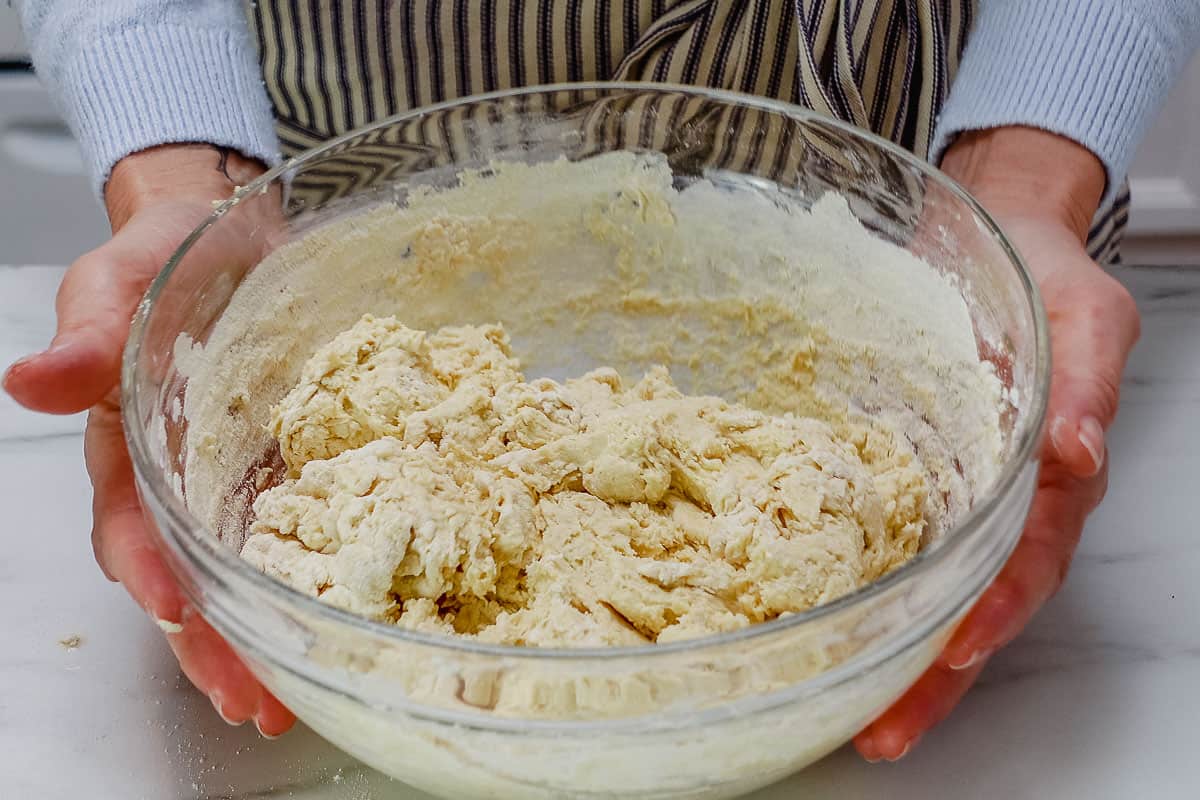
Cover the bowl and let the dough rest for 1 hour on the counter.
Step three: fold the dough
Use a bowl scraper to turn the dough out onto a floured work surface.
Flour the top of the dough and use your fingers to gently press it out into a rectangular shape.
Starting with one side of the dough, lift it up and fold it toward the center of the dough.

If the dough is sticking to the work surface, use the bench scraper to help it release.
Repeat this on all four sides of the dough and place the dough back into the bowl.
Cover the bowl and let the dough rest for 15 minutes.
Repeat the folding process one more time.
Step four: bulk rise
Cover the dough and let it rest at room temperature for 3-4 hours, or until it has risen by about 20-30%.
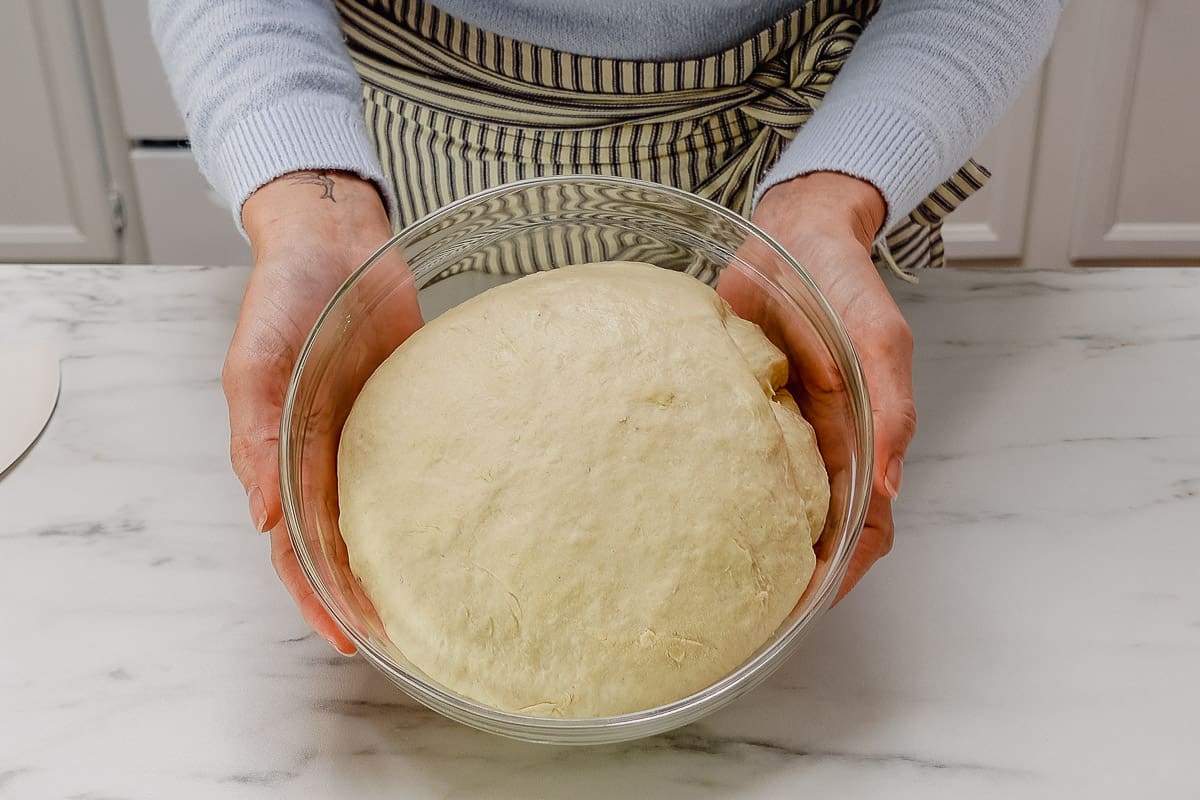
Step five: shape the dough
Generously flour a banneton or line it with a clean tea towel.
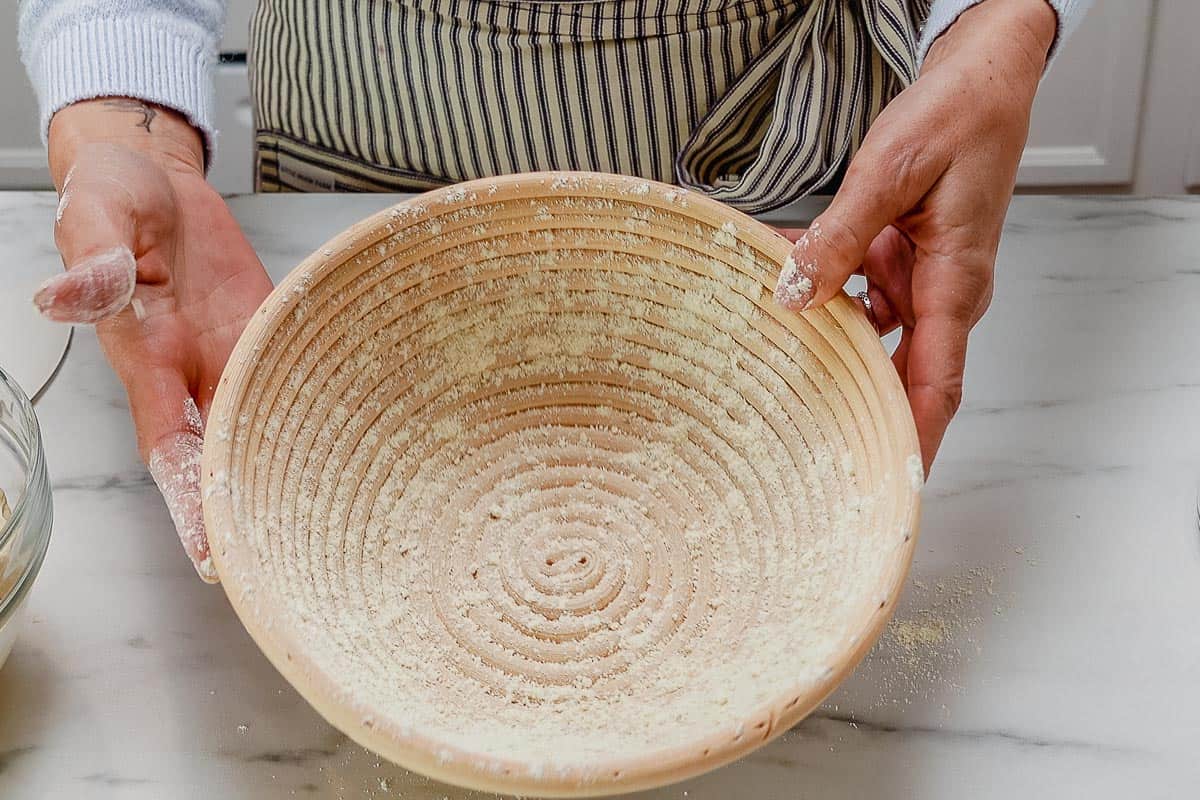
Turn the dough out onto a floured surface, but this time do not flour the top of the dough.
Pull the sides of the dough into the center.

Use the bench scraper to lift and flip the dough so that the seam-side is facing down.
Use your hands to cup the dough while gently turning it in a circular motion on the work surface.
If your hands start to stick to the dough you may lightly flour them but try not to use too much.
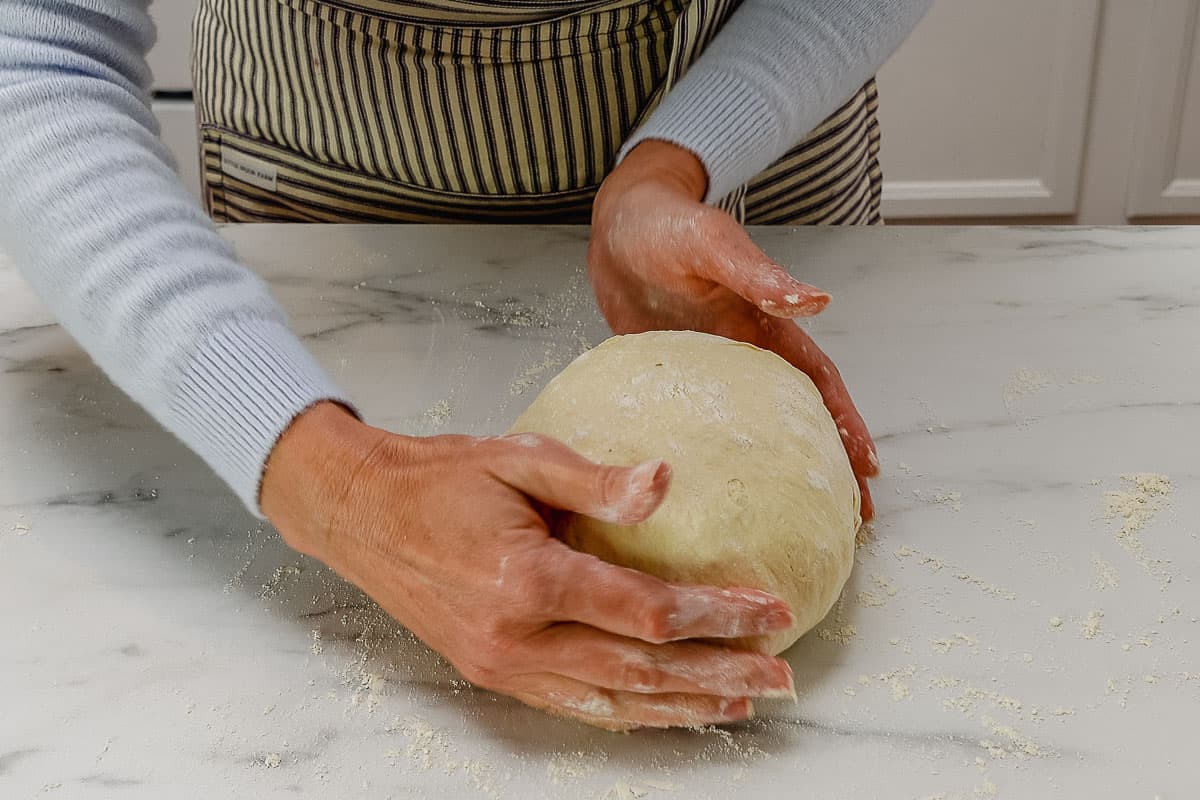
Use the bench scraper to pick up the dough and turn it over, into the banneton, with the seam-side facing up.
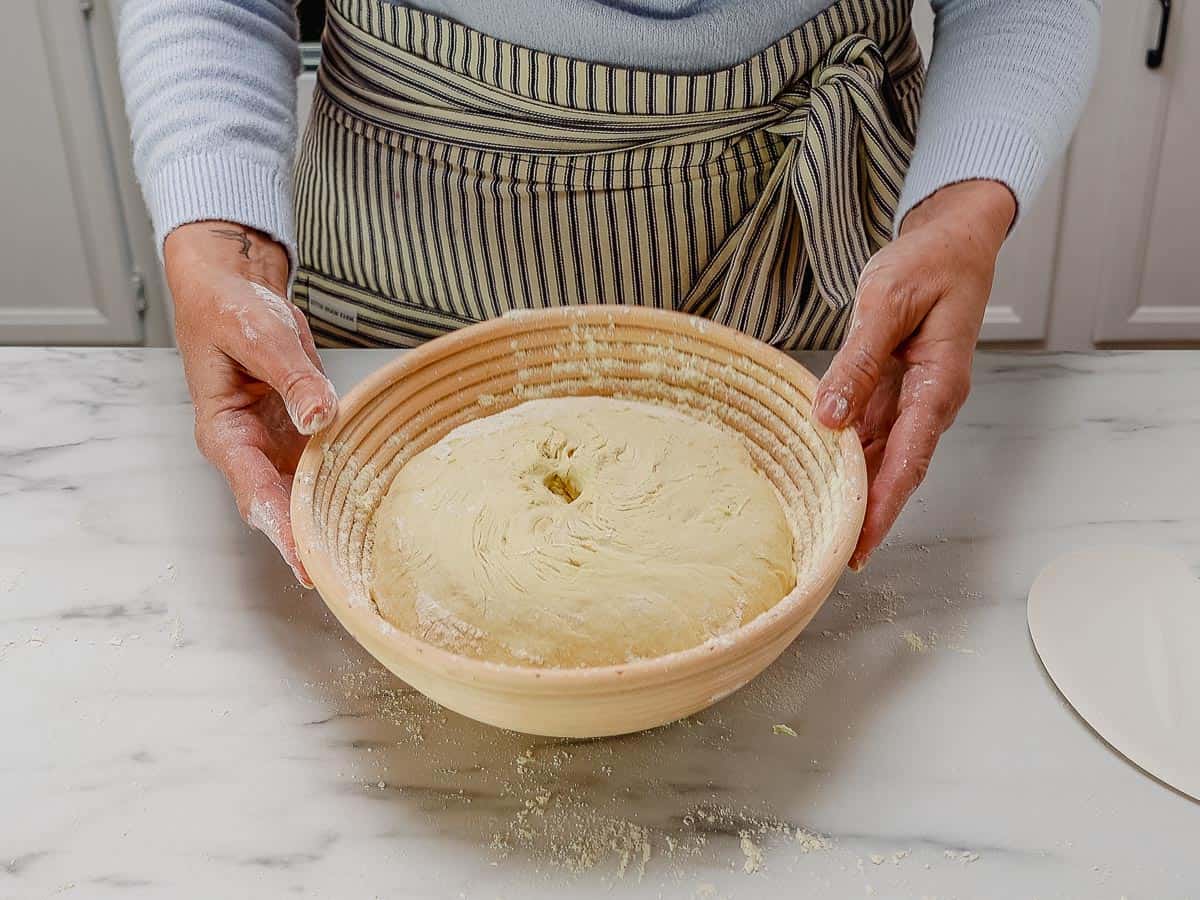
Cover the bowl and set a timer for 30 minutes. (This is when you'll preheat your oven.)
Allow the dough to rest at room temperature during the second rise.
Step six: second rise and preheat oven
The second rise will take about 90 minutes from start to finish, with the oven preheating in the final hour.
After the dough has rested for 30 minutes in the banneton, place your dutch oven into the oven on the second to lowest rack.
Allow the oven to preheat at 500°F(260°C) for 1 hour.
NOTE: The dough will have risen about 1 to 2 inches in the banneton when it is ready to bake.
Step seven: bake
Turn the dough out onto a piece of parchment paper and use a lame or sharp razor to score the top of the dough.
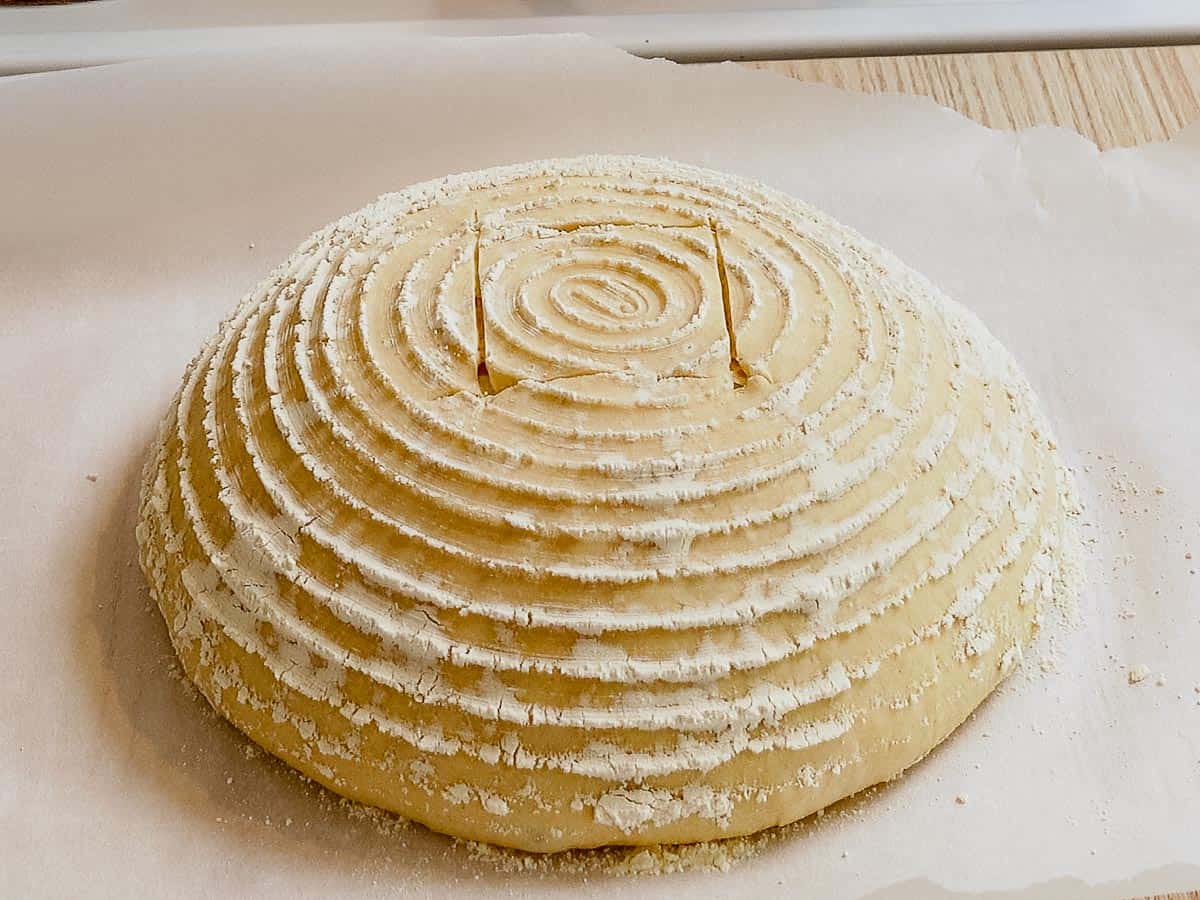
TIP: Because of the weak gluten structure of einkorn, it's important to make a shallow cut to the top of the dough, never on the sides. Do not score deeper than ¼" into the dough.
Use the parchment paper as a sling to pick the dough up and transfer it to the dutch oven. Place the lid on the pot.
Turn the oven temperature down to 450°F (232°C).
Bake the bread for 40 minutes.
After the 40 minutes is up, remove the lid and check to see if the crust is dark enough for your preference.
The bread can be baked uncovered for 5-10 more minutes in order to achieve a darker crust.
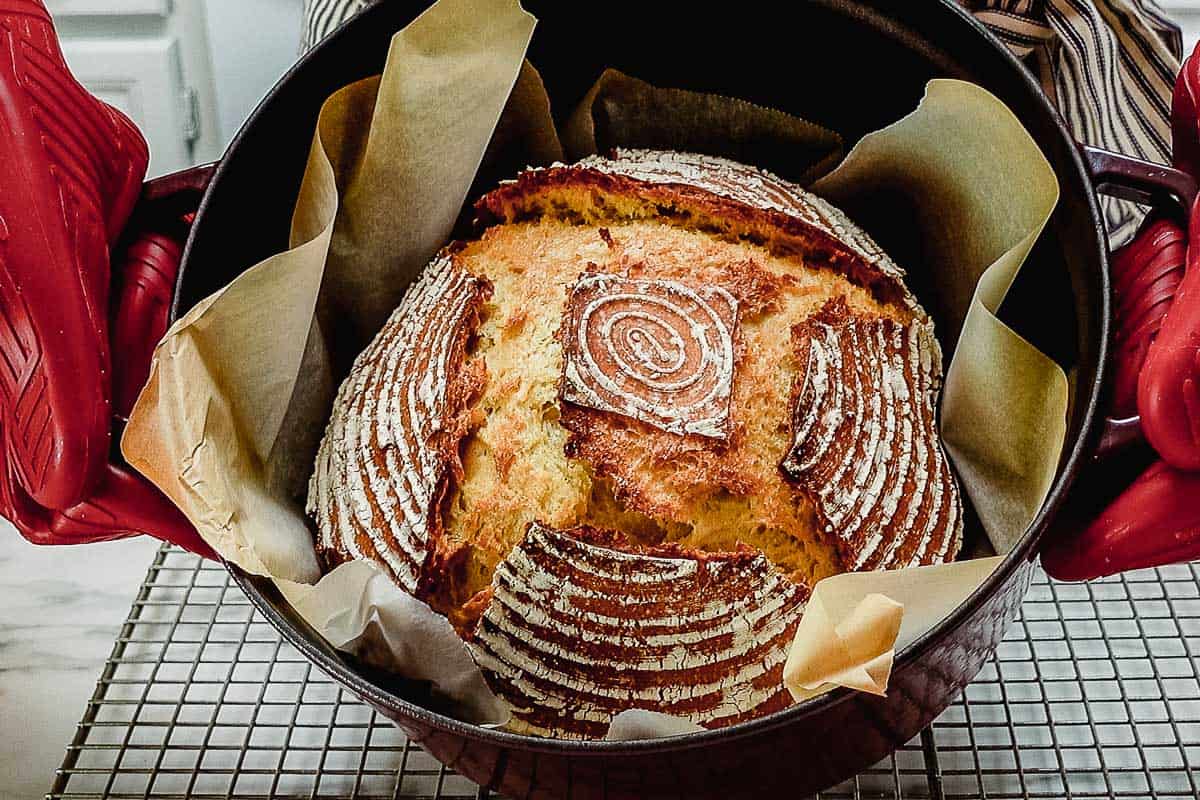
Step eight: cool
Transfer the loaf to a cooling rack and allow it to rest for 2 hours before slicing.
If you slice the bread while it is still hot, the texture of the crumb will be "gummy or sticky" from the heat and moisture.
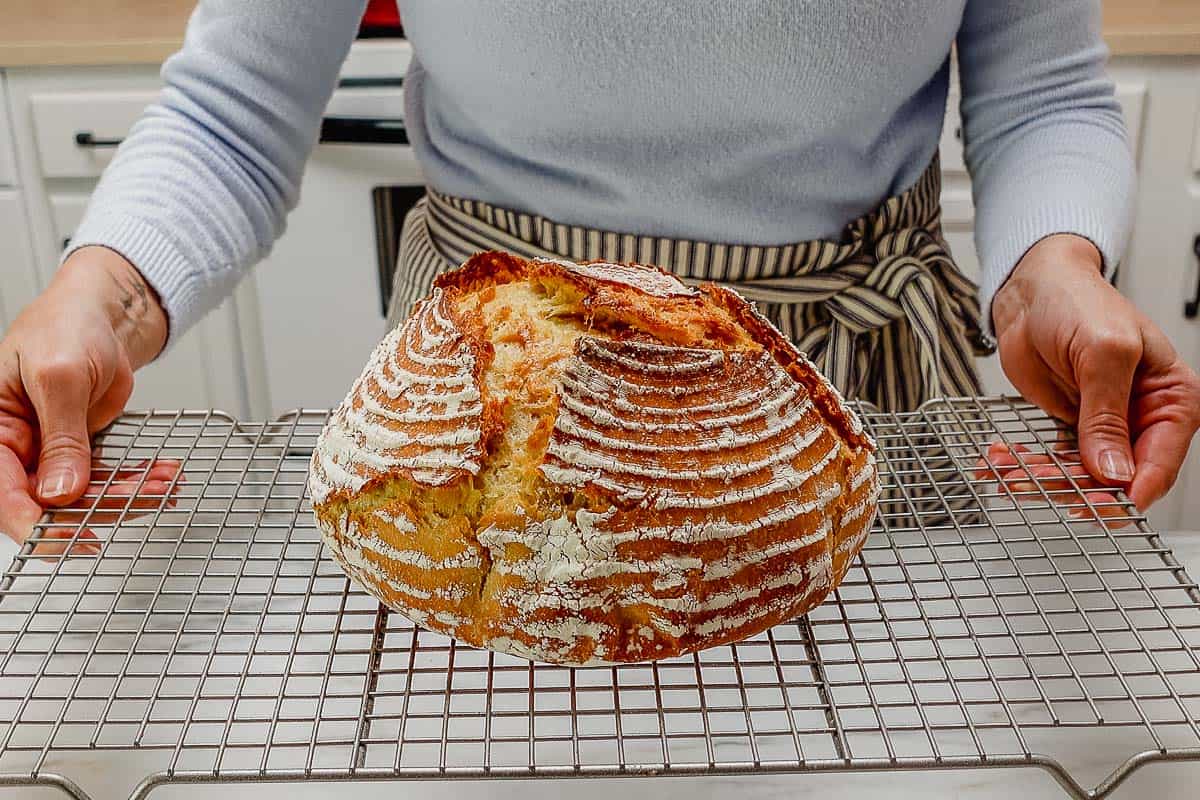
Sample baking schedule
The night before
7 PM Feed your sourdough starter so that it is bubbly and active in the morning.
The next morning
7 AM Mix the dough ingredients and let rest for one hour.
8 AM Fold the dough, cover and let rest 15 minutes.
8:15 AM Fold the dough, cover and let rest 3 hours.
11:30 AM Shape the dough and place in a floured banneton. Set a timer for 30 minutes to preheat the oven.
12 PM Place dutch oven into the oven and preheat it to 500°F (260°C) for 1 hour.
1 PM Turn the dough onto a piece of parchment paper and score the top. Transfer to the dutch oven, cover and bake for 40 minutes. Let cool for 2 hours.
NOTE: This is the schedule I use to bake einkorn sourdough bread. The temperature of my kitchen is 68°F (20°C). Warmer kitchens will require less time and cooler kitchens will require more time. Adjust your schedule accordingly.
How to store it
Store the bread at room temperature for up to 2 days either wrapped in a beeswax wrap, in a bread box, a bread bag or cut-side down on a cutting board covered with a cake-stand cover.
For long-term storage, cut the bread into slices and keep them frozen in a freezer-safe container for up to 1 month.
We love to use stasher-bags (affiliate link) for freezing sourdough bread slices.
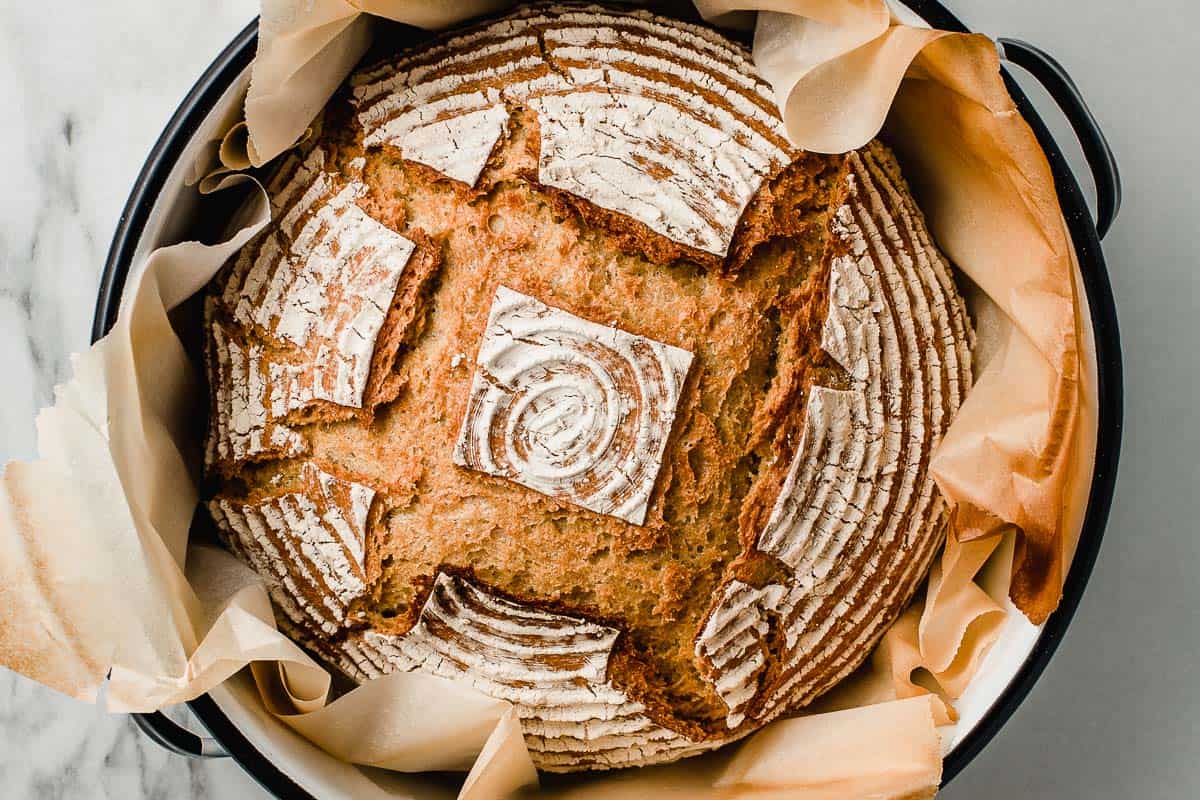
Common questions
Einkorn is a wheat flour making it good for sourdough bread baking. A sourdough starter can be created and maintained using einkorn flour.
There are two ways to make a sourdough starter with einkorn. You can start from scratch with our sourdough starter recipe using einkorn flour OR you can convert the sourdough starter that you already have.
To convert your existing sourdough starter into an einkorn sourdough starter, take 25g of your existing starter and transfer it to a clean jar. Add 100g of einkorn flour and 100g of water, stir and let rise at room temperature. After about 4 feedings, your starter should be completely converted to einkorn.
Einkorn wheat contains the protein gluten and is NOT safe for anyone with celiac disease to eat. Einkorn sourdough is not gluten free.
More easy sourdough recipes
Do you like this recipe? Make sure to subscribe to our newsletter and we'll send you the latest and greatest!
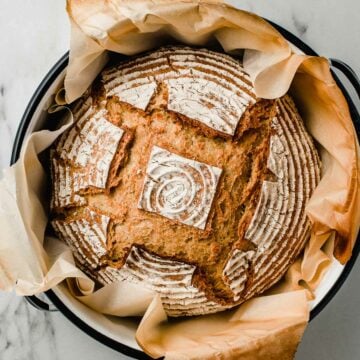
Einkorn Sourdough Bread
INGREDIENTS
INGREDIENTS TO MAKE 1 CUP (200 G) OF ACTIVE SOURDOUGH STARTER
- 1 ½ tablespoons (25 g) sourdough starter
- ¾ cup + 1 tablespoon (100 g) all-purpose einkorn flour
- 7 tablespoons (100 g) water
Dough Ingredients
- 1 cup (200 g) active sourdough starter
- 1 ¼ cup (300 g) water
- 4 ⅕ cups (540 g) all-purpose einkorn flour
- 2 teaspoons (10 g) sea salt
INSTRUCTIONS
Feed your sourdough starter
- 12 hours before you plan to mix the dough, add the ingredients to make 1 cup (200 g) of active sourdough starter to a clean jar: 25g sourdough starter, 100g einkorn all-purpose flour and 100g water. Stir until combined, loosely cover the jar and let the starter rise at room temperature. (The ingredients will create a total of 225 g active starter but, because some of it will stick to the sides of the jar during the transfer, we are making a little more than needed.) The sourdough starter is ready to use when it has doubled in size and there are plenty of bubbles on the surface and sides of the jar.
Make the dough
- Mix the dough ingredients. Add the 200g active sourdough starter, 540g all-purpose einkorn flour, 300g water and 10g salt to a large mixing bowl. Use a dough whisk or an off-set spatula to mix the ingredients together until there are no dry bits left in the bowl. Cover the bowl and let the dough rest for 1 hour.
- Fold the dough. Use a bowl scraper to turn the dough out onto a floured work surface. Flour the top of the dough and use your fingers to gently press it out into a rectangular shape.Starting with one side of the dough, lift it up and fold it toward the center of the dough. If the dough is sticking to the work surface, use the bench scraper to help it release. Repeat this on all four sides of the dough and place the dough back into the bowl. Cover the bowl and let the dough rest for 15 minutes. Repeat the folding process one more time.
- First rise. Place the dough back into the bowl and cover. Allow the dough to rise at room temperature for 3-4 hours or until it has risen by 20-30%.
- Shape the dough. Turn the dough out onto a floured surface. Pull the sides of the dough into the middle, working all the way around the outside and then flip the dough over. Use your hands to cup the dough around the bottom near the work surface and turn it so that the dough forms a taut ball.
- Second rise. Place the dough, seam-side up in to a floured banneton or one lined with a clean tea towel. Cover the dough and allow to rise at room temperature. Set a timer for 30 minutes.When the timer goes off, turn on the oven to preheat to 500°F (260 °C) with the dutch oven inside. Set a timer for 1 hour and allow the oven to preheat for the final hour of the second rise. (The dough will rise for a total of 1 hour and 30 minutes.)
- Score the dough. Remove the dutch oven and set on top of your stove. Turn the dough out onto a piece of parchment paper. Score the top of the dough with a razor or sharp knife no deeper than ¼". Use the parchment paper like a sling to transfer the dough to the dutch oven. Cover with the lid and place it back into the oven. Turn the oven down to 450°F (232 °C)
- Bake for 40 minutes with the lid on. Remove the lid and check to see if the crust is dark enough to your liking. If it is, remove it and let cool. If not, bake for an additional 5-10 minutes uncovered.
- Cool. Allow the bread to cool for 2 hours before slicing.
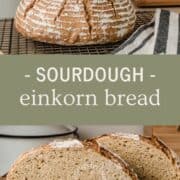
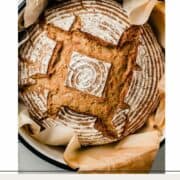
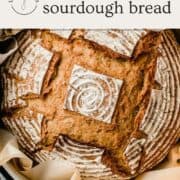
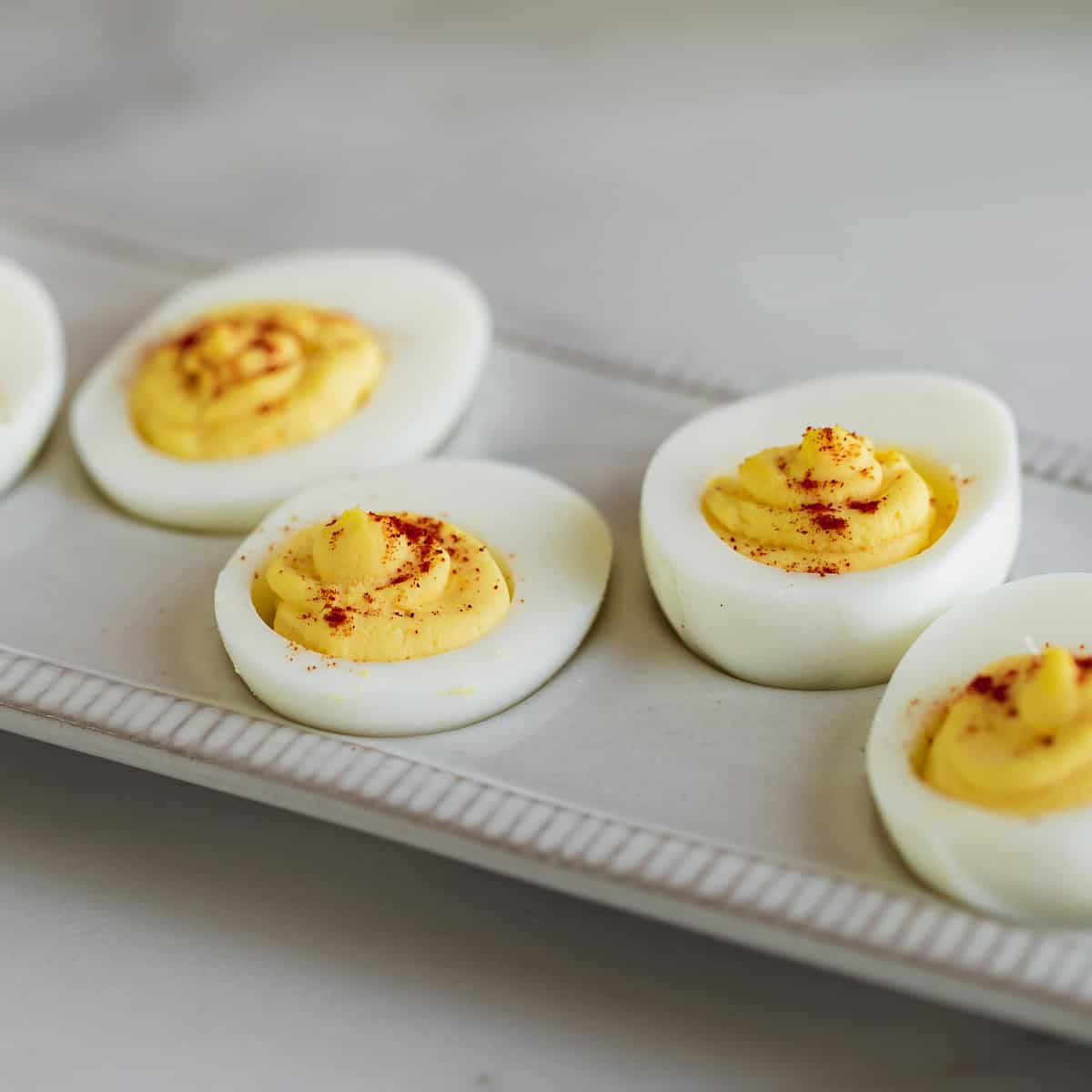
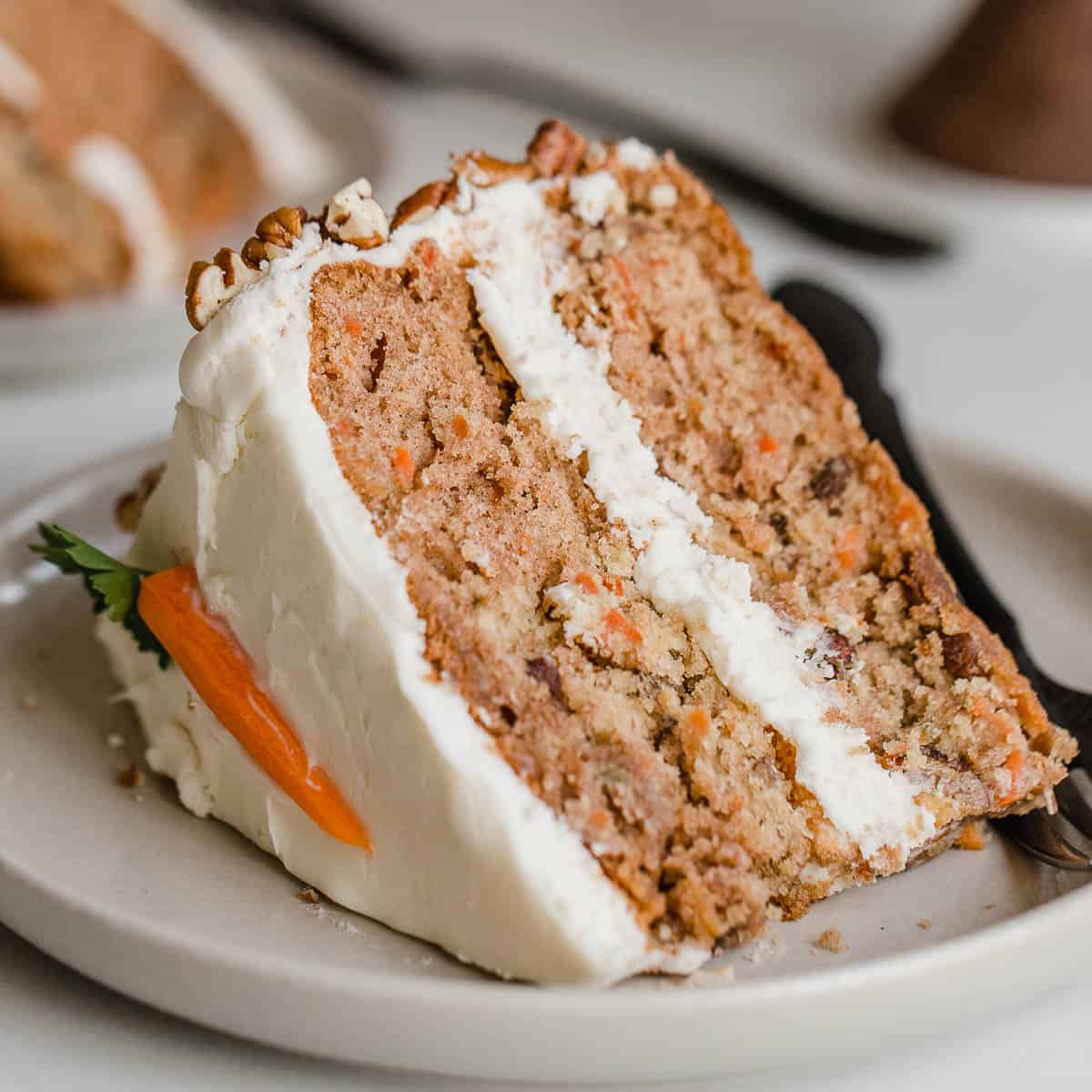
Julie Macdonell says
This recipe is so good. I have been making is for my husband and me and also our grown children families. Thank you. I would love more Einkorn recipes.
Claire says
Is the sourdough starter in the recipe a dry starter or a wet?
Thank you!
Amy says
A wet starter.
Rebecca Otten says
I just have einkorn whole wheat flour. Do I need to adjust the recipe? If so how? THANK YOU
Amy says
Hi Rebecca, yes you will have to adjust the recipe. Whole wheat is much different and will absorb more water. You will need to add water until it feels right. But you will need to do it slowly. It takes about 15 minutes for the flour to absorb the water. I would add about 25grams more water than the recipe calls for and let the dough sit. If it still feels too stiff, add a little more water.
Rebecca says
Thank You!
Vika says
This is the best recipe ever! Just started using Einkorn and love it. The sample schedule brought tears of joy to my eyes. Cooking and baking are THE hardest tasks for me as a wife and mother. Any help to spell it out is very welcome. I appreciate all the little details and pictures. One question, I have a Lodge dutch oven but it is enamel. And big. Should I get a cast iron and what size?
Amy says
You can use your enamel cast iron dutch oven!
Vika says
Great! Thank you
Marian says
The instructions in this recipe and the accompanying video are so helpful. I made my first beautiful looking sourdough loaf using your instructions. I'm so happy!
Sammy says
Can I just use 200g of regular AP starter that I fed with equal weights of everything? Or will the recipe not turn out if I don’t do the long slow overnight starter rise with the 4/1 ratio?
Amy says
Yes you should be able to do that with no problems!
mary says
This was a very yummy bread. My first loaf was a little flat, however. Going to try making it again as it was worth it! Just a lovely, hardy, old fashion bread. I sliced and froze about 1/3 of it and used it for breakfast toast bread. You know when you read, "bread is the staff of life"? Well, this bread is really it! Thank you, Amy! I have to let you know, you are the reason I had enough courage to start making sourdough May 2020! Your instructions and videos were so clear and well done. Herman (my starter) and I thank you!
Jim says
Is it necessary to turn your starter into Einkorn starter by feeding if with Einkorn flour several times before using it, or can you just feed your starter once at night with Einkorn flour and use it the next morning?
Amy says
Hi Jim, no you don't have to feed it several times in order to bake with einkorn flour. The only time I would suggest feeding the starter several times with Einkorn, is if you are trying to switch exclusively to Einkorn flour and you do not want any other flour in the starter. Does that make sense?
Garnett Hutchinson says
baked per directions with a bit more time on rests and ferments. My boule looked just like Amy's and tasted amazing. I want to share a technique I came up with - on the bottom of my Dutch oven I put a layer of clay beads that are used to weigh down pie crust in the blind bake. It works so well, brown bottom and never burns! Thanks for all your terrific information and recipes, Amy!
Amy says
Thank you 🙂
Lesley says
**
Hi, my result was very disappointing I’m afraid.
I’m fairly new to baking with my starter but so far all my loaves have been pretty good. This was my first attempt with all einkhorn. Came out of the oven flat. Not sure if it’s even edible. A waste of expensive flour…
I didn’t do the cold ferment. I followed all instructions carefully.
mary says
Great idea! I will try that!
DeeAnn says
I'm new to bread making and I mill my own Einkorn berries. Since I am using whole grain Einkorn flour should I increase the water? IF so how much?
Amy says
Hi DeeAnn, Yes you will have to adjust the water some as it will need slightly more when you grind your own berries. I would use the amount called for in the recipe and then add about 25 grams of water to the dough, incorporate it and add more if the dough is too stiff.